Up Next

Mercedes’ extremely conspicuous Bahrain update package has been the main technical theme of the second pre-season Formula 1 test.
It had been immediately clear from the launch of the 2022 cars that the greatest design differences might be around the sidepods and how the various designers have sought different paths in managing the airflow in the upper edge of the floor.
And far from the 2022 designs being – as originally expected – more similar to each other, we are seeing some really big differences with these new generation cars and almost opposite choices in the search for the best fluid dynamics.
Perhaps the clearest example of this diversity in concept comes from the opposing philosophies of Ferrari and Mercedes.
Mercedes is now taking a ‘zero sidepods’ concept to the extreme with how it tapers the bodywork around the radiators.
Ferrari, as was clear right from its launch, has relatively massive side bodywork.
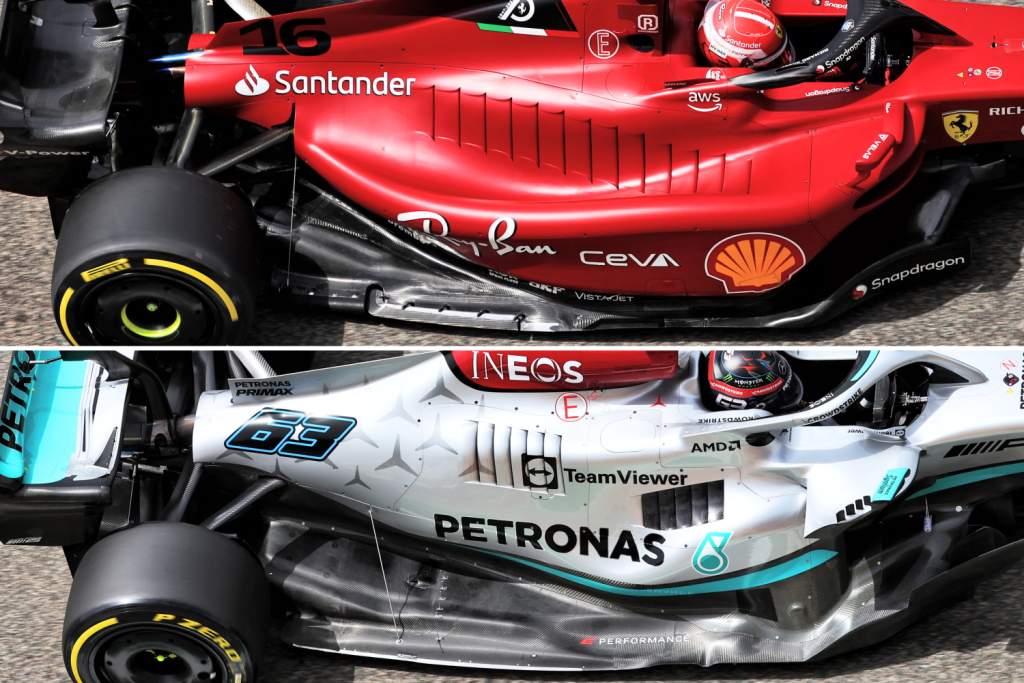
So why did Ferrari choose such wide sides? And why did Mercedes completely reduce the side volume? Can both philosophies work or will one prove to be absolutely wrong?
Other teams have adopted solutions that are located in the gap between these two paths, or are simply not so extreme. Ferrari and Mercedes at this time represent the extremes of two different airflow management philosophies.
FERRARI’S MAXIMISED SIDEPODS
Ferrari’s airflow management is directed towards the highest part of the car. The ‘hollowed out’ car body, where there are the cooling openings, has a shape specifically designed to bring the airflow under the rear wing, right where the beam wing is.
The aerodynamicists at Maranello have prioritised trying to keep the flows along the sides separate, without any downwashing.
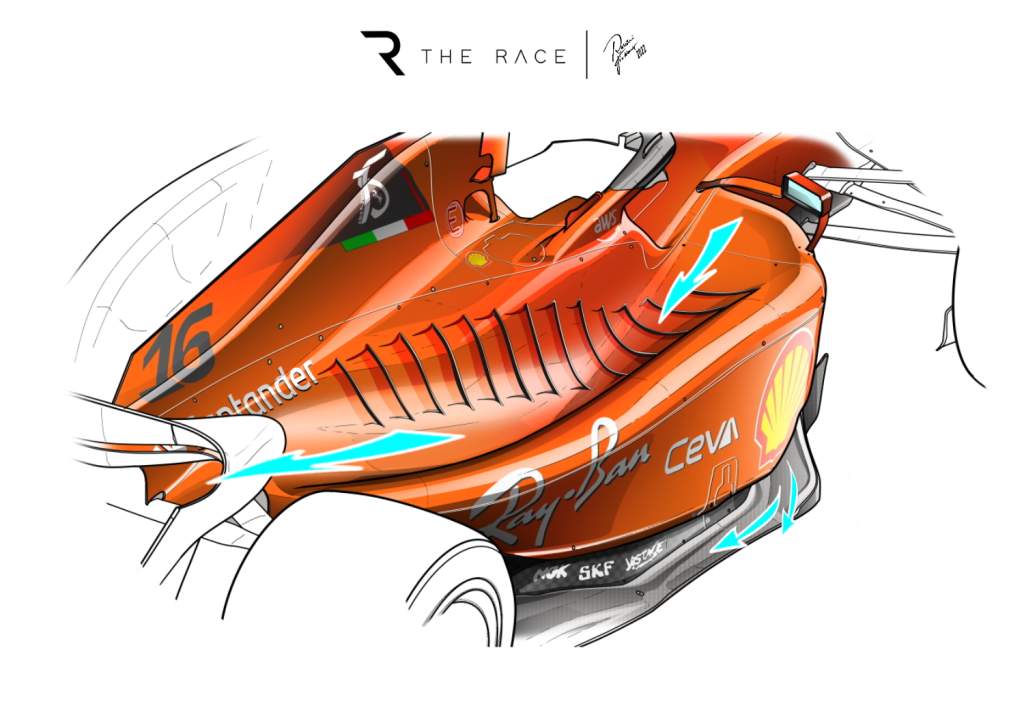
Compared to other teams that have adopted high sides (such as Aston Martin, Alpine and Alfa Romeo) Ferrari does not tighten the sides in the lower part, and they always remain fairly regular and square.
Ferrari seems to be favouring drag reduction as much as possible, interfering as little as it can with the flow of air in the upper part of the engine cover.
In this regard, the additional openings in the air scoop seen last year have disappeared, returning to a triangular shape as in 2020. This allows for a very slim top, which interferes less with the flow that will hit the rear wing. As part of this, the ‘towers’ on the sides of the triangular intake have been maintained, as they are useful for directing the flow towards the rear wing.
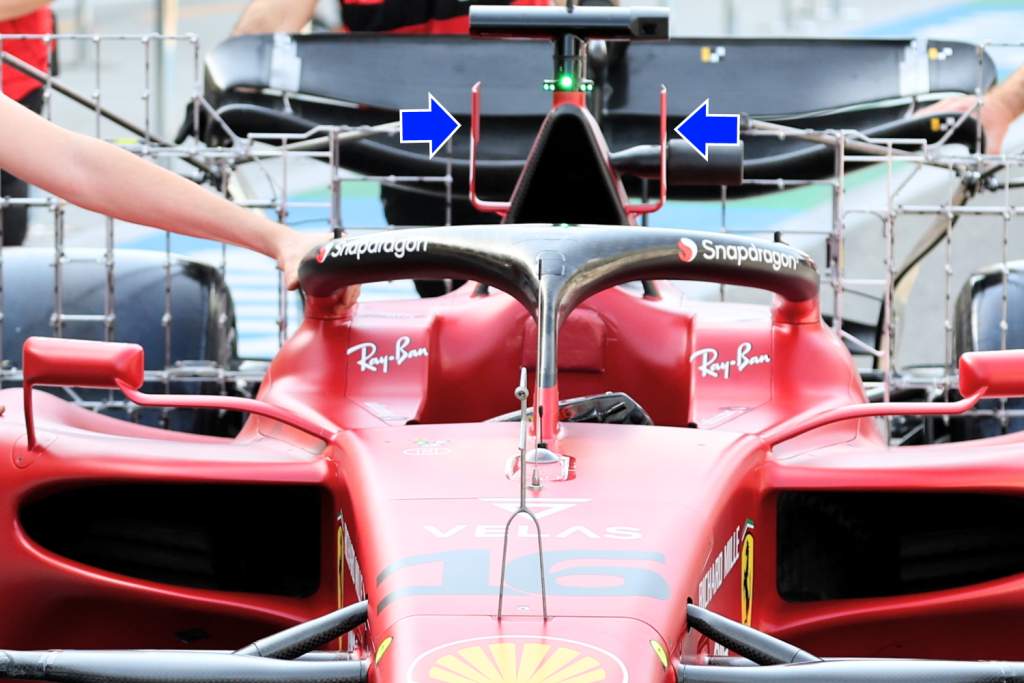
Ferrari’s choice to focus on the flow at the top could also indicate that the team is confident enough of being able to generate downforce from under the floor.
However, team principal Mattia Binotto has admitted that should this technical direction prove to be clearly wrong, it would not be impossible to intervene on the F1-75 to review the sides.
The arrangement of the radiators does not in fact occupy the entire sidepod volume, and there is room for further tightening. The shape of the sides Ferrari has gone for must therefore be desired for purely aerodynamic needs, and not due to mechanical dimensions of what’s being packaged.
MERCEDES: MINIMISED SIDEPODS
The aerodynamic analysis and the study behind it at Mercedes seem much more complex. The aerodynamic shapes of the sides have been revised more in the front section compared to the first version from the test in Spain.
Mercedes was one of the first teams to exacerbate the coanda effect on the bodywork, creating an air chute that would bring the flow of the upper part towards the upper edge of the floor and the diffuser.
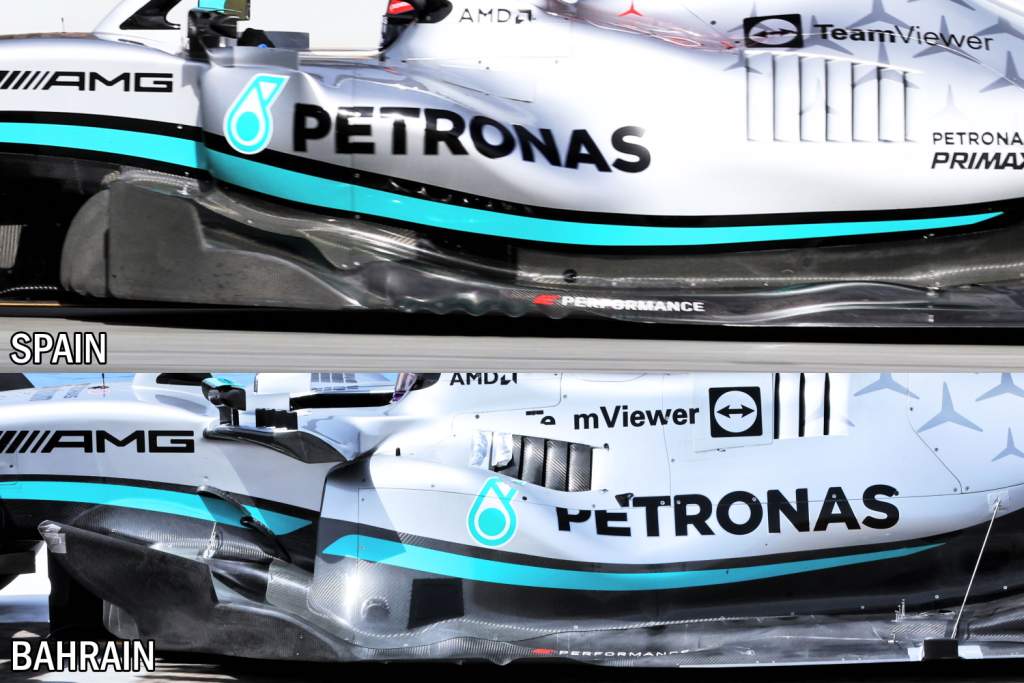
The new sides are trying to exploit this concept, combining less resistance with a super narrow front section of the sidepods.
In the new Bahrain specification, the cooling inlets have an almost inverted shape compared to the past, with a greater width at the bottom, and narrower at the bottom.
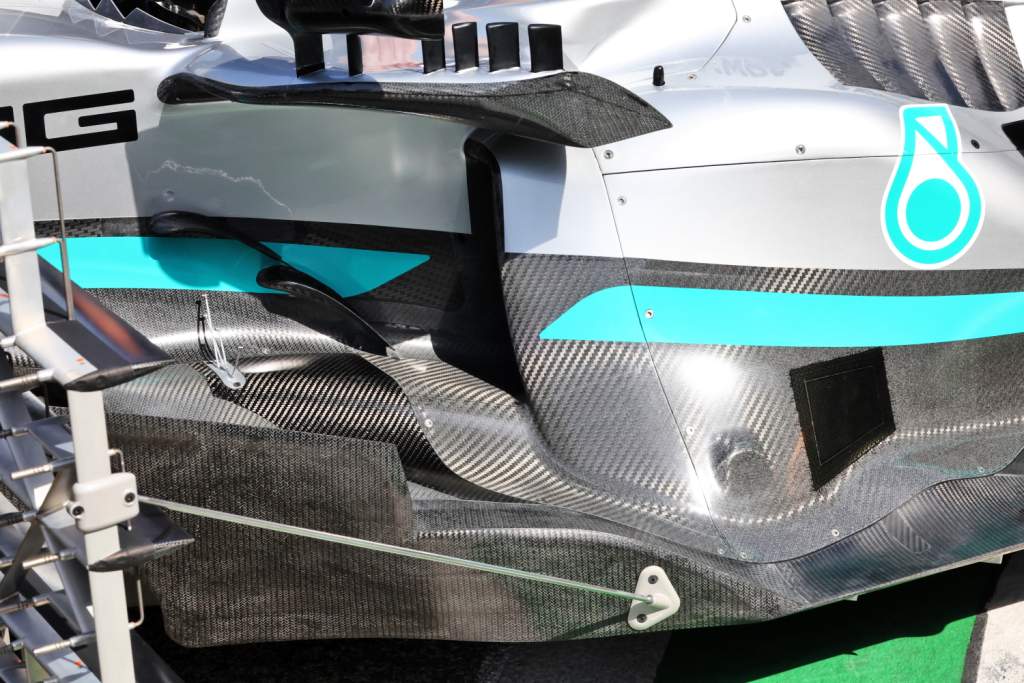
Mercedes studied extreme aerodynamic shapes to reduce the drag coefficient, occupying less lateral space for the air, and ensuring a full-bodied flow of air above the floor.
This should also ensure a greater difference in pressure between the air flowing above the floor and the air flowing at high energy in the venturi tunnels.
The search for less drag on the sides led Mercedes’ aero team to separate the conical lateral protection structure from the inlet of the radiators.
The anti-crash cone has thus become a wing that generates downwash, while the shape of the inlet also acts as a support for the mirrors. This aerodynamic choice is very close to the limit of the regulations, and has already created discussions about its alleged irregularity.
WHICH IS RIGHT?
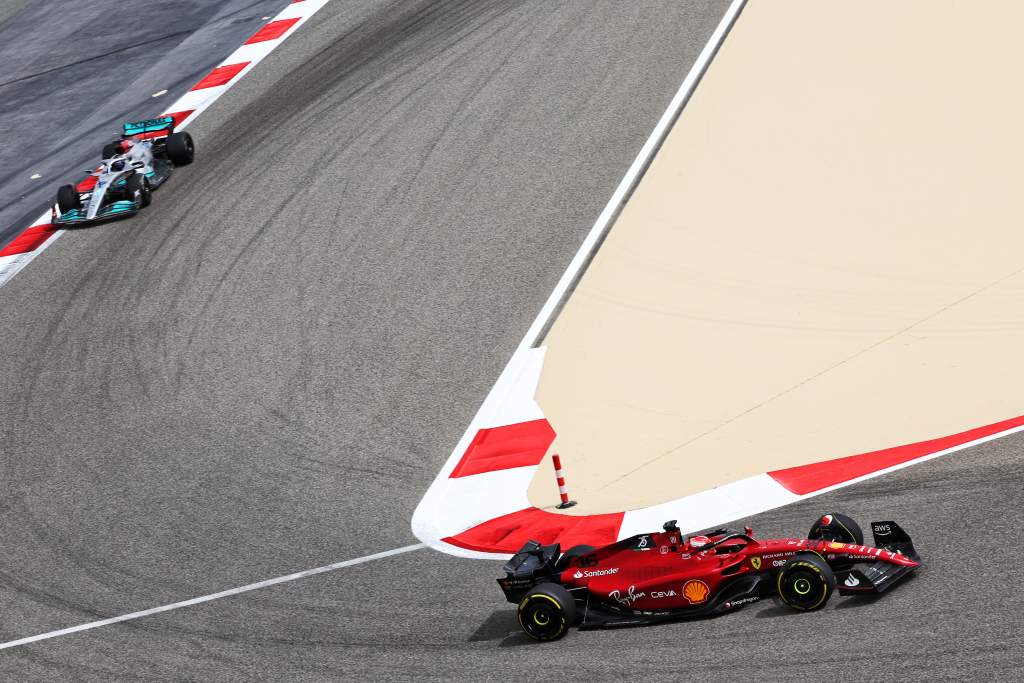
Only on-track performance will actually reveal which of these dramatically different philosophies is correct.
Both teams will first have to understand the behaviour of the car on the track, and see if there is a correlation between the data collected in the factory (CFD and windtunnel) and the track data. Whoever can figure out how to set up the car right away will have a big advantage in development over the course of the season.
The first problem to solve will certainly be porpoising, and both teams have already intervened here by working on the floor and adding reinforcements.
It’s unlikely that either of Mercedes or Ferrari could copy each other during the season if one proves clearly superior. The aerodynamic choices are too opposite, and concern several parts of the car.
Mercedes also seems to be adopting heavier wings, both at the front and at the rear. The front wing of the Mercedes has a shape with much higher spoilers than the Ferrari in the central section. Ferrari, on the other hand, has more constant and rectilinear dimensions.

Much of the whole fluid dynamics of the car depends on the design of the front wing, and the W13 and F1-75 seem too different to be copied from each other here too.
But if one of these two roads is clearly advantageous, we will surely start to see more uniform choices among all the teams starting from 2023 as they copy whichever of Mercedes and Ferrari has made the right call for 2022.



